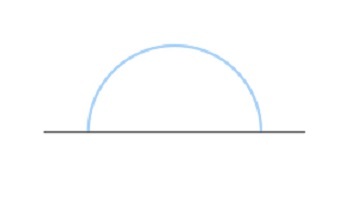That boy should have been careful 2

A boy of mass m is initially seated on the top of a hemispherical ice mound of mass M and radius R that is free to slide horizontally on a frictionless floor. He begins to slide down the ice, with a negligible initial speed. Approximate the ice as being frictionless.
At a height of b a × R , the boy loses contact with the ice, where a and b are coprime positive integers.
What is the value of a + b ?
Details and Assumptions:
- M = 2 5 7 m .
- Neglect air resistance.
- Take the boy to be a point particle.
Try this problem first: That boy should have been careful .
The answer is 9.
This section requires Javascript.
You are seeing this because something didn't load right. We suggest you, (a) try
refreshing the page, (b) enabling javascript if it is disabled on your browser and,
finally, (c)
loading the
non-javascript version of this page
. We're sorry about the hassle.
1 solution
I am just confused about how the tangency condition gives rise to the equation Vy / Vx,ice = - sqrt(R^2 - h^2)/h
Log in to reply
It comes from the geometry of the circle. A tangent at the point ( x , y ) on a circle centered at the origin will have slope − y x (since the radius has slope x y and the radius and the tangent are perpendicular). If you're still confused how that relates, just say so, and I'll try to clarify more when I'm at my keyboard.
Log in to reply
Oh okay that clears the right-hand side of the equation (Taking ratios of x and y coordinates) , but how is this equal to the ratio of Vy and V (x, ice) ?
Log in to reply
@Dheepan 01 – This is an even more general fact: The [instantaneous] slope of a path of a particle is equal to the ratio of its [instantaneous] velocity in the y direction and its [instantaneous] velocity in the x direction.
Mathematically, this is just the chain rule for derivatives: d t d y = d x d y ⋅ d t d x which literally says, when we measure in the ice's reference frame, " v y equals the slope to the path's tangent times v x , i c e ".
Physically (if you haven't seen the chain rule before), if we removed gravity at that instant, then Newton's first law says we'd travel on the tangent line, with slope m = Δ x Δ y , with a constant velocity ( v x , i c e , v y ) = ( Δ t Δ x , Δ t Δ y ) . Then you can algebraically show v x , i c e v y = Δ t Δ x Δ t Δ y = Δ x Δ y = m just by cancelling the common factor of Δ t = 0 .
Perfect! I think i understood the whole question now! Thanks a lot!
We define the following variables: v i c e = horizontal velocity of the ice mound with respect to the ground v x = horizontal velocity of the boy with respect to the ground v y = vertical velocity of the boy with respect to the ground h = height of the boy above ground and from these, we define the following "helper" variables v x , i c e = horizontal velocity of the boy with respect to the ice mound = v x − v i c e ρ = R h Here, I find it pertinent to note that we assume all relativity effects are completely Newtonian. This is a fairly harmless assumption for the numerical value of a / b , but it probably would change a + b (if such a value even exists in Einstein Relativity). Also, we should note that, with these variables, we are actually looking for the value of ρ when the boy loses contact.
We now consider a few equations:
If we solve those equations for ρ (if people really want to see this, I'll show it below, but it really is just shuffling around symbols), we find the equation 0 = ρ 3 − ( 1 + M m ) ( ρ 3 − 3 ρ + 2 )
Setting M m = 7 2 5 and solving for the only solution ρ ∈ [ 0 , 1 ] yields ρ = 5 4 . It follows that a = 4 , b = 5 , and a + b = 9
Note: When we let M m tend to 0 , then the conservation of linear momentum equation would give a constant v i c e = 0 , as in the problem that inspired this one . You might also note that in this case, the equation I have given for ρ becomes 0 = 3 ρ − 2 , giving the correct answer for that problem.